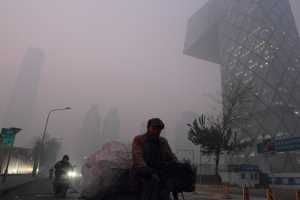
17 Dec Air Pollution Declines for All Groups, But Racial Disparities Persist
MedicalResearch.com Interview with:

Jiawen Liu
Jiawen Liu, PhD student
Department of Civil & Environmental Engineering
University of Washington
MedicalResearch.com: What is the background for this study?
Response: As previous literature has documented, racial/ethnic minority populations and lower-income populations in the US often experience higher-than-average burdens of air pollution and its associated health impacts.
The disparities vary by pollutant, location, and time. In 2014, Clark et al. found higher average NO2 exposure for nonwhites than for whites and for below-poverty-level than for above-poverty-level. Clark et al. (2017) expanded research for NO2 exposure by race-ethnicity and socioeconomic status to 2000 and 2010 and found that absolute racial-ethnic disparities decreased over time while relative racial-ethnic disparities persisted.
MedicalResearch.com: What are the main findings?
Response: We studied racial-ethnic and income disparities at multiple geographic levels (contiguous US; state; urban/rural areas), using the CACES air pollution models and demographic data from three decadal censuses. This is the first comprehensive and consistent national decades-long study for six criteria pollutants, over time and space.
In our study, we found air pollution levels and exposure disparities generally declined during 1990 to 2010. Absolute racial-ethnic exposure disparities decreased more than relative racial-ethnic exposure disparities. In 2010, the most-exposed racial-ethnic group was always a minority group for all pollutants. Racial-ethnic disparities exist in all US states, for multiple pollutants, and remained an ongoing environmental justice issue. Racial-ethnic exposure disparities persisted after accounting for income. Indeed, exposure disparities by race-ethnicity were distinct from and larger than those by income.
MedicalResearch.com: What recommendations do you have for future research as a result of this work?
Response: Future research could investigate the health disparities associated with exposure disparities; locations with especially large disparities; and, possible solutions to address the exposure disparities we observe.
MedicalResearch.com: Is there anything else you would like to add?
Response: While these results are new to the scholarly literature, they are not new to communities suffering the disproportionate health risks from air pollution. We hope the information in our study will help motivate positive change, namely, improving air quality while reducing and eliminating exposure disparities.
Citation:
iawen Liu, Lara P. Clark, Matthew J. Bechle, Anjum Hajat, Sun-Young Kim, Allen L. Robinson, Lianne Sheppard, Adam A. Szpiro, Julian D. Marshall. Disparities in Air Pollution Exposure in the United States by Race/Ethnicity and Income, 1990–2010. Environmental Health Perspectives, 2021; 129 (12) DOI: 10.1289/EHP8584
JOIN OUR EMAIL LIST
[mailpoet_form id="5"]We respect your privacy and will never share your details.
[last-modified]
The information on MedicalResearch.com is provided for educational purposes only, and is in no way intended to diagnose, cure, or treat any medical or other condition. Always seek the advice of your physician or other qualified health and ask your doctor any questions you may have regarding a medical condition. In addition to all other limitations and disclaimers in this agreement, service provider and its third party providers disclaim any liability or loss in connection with the content provided on this website.
Last Updated on December 17, 2021 by Marie Benz MD FAAD
